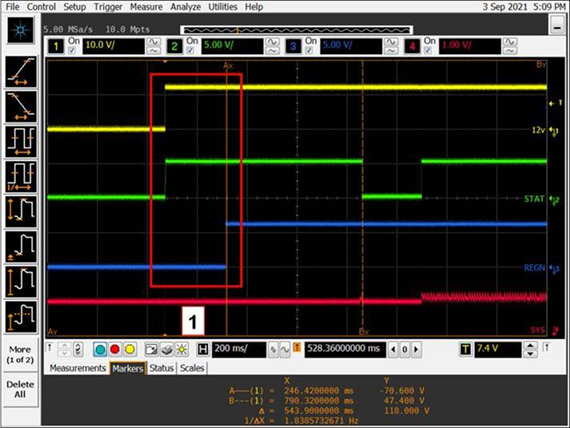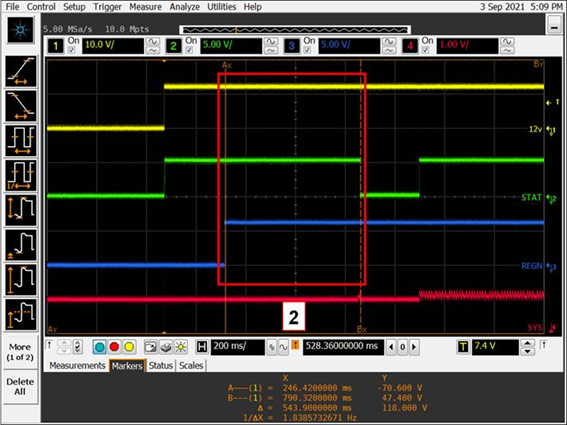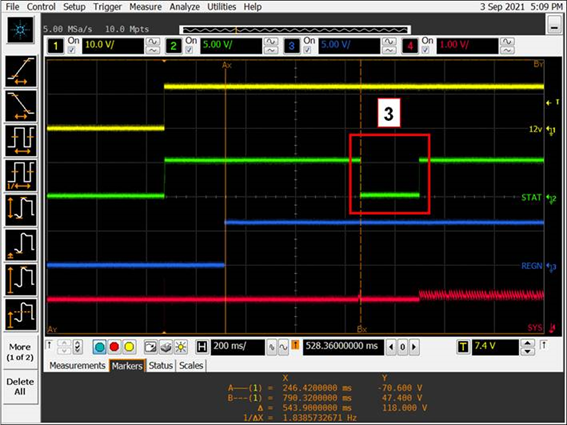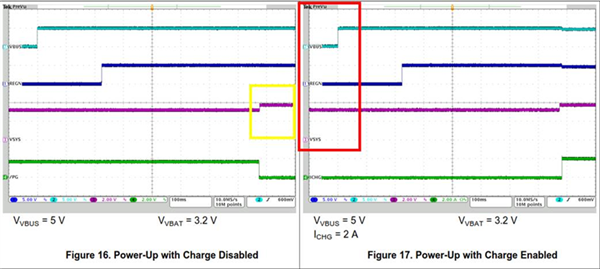Dear team
There are a few problems with the timing of BQ25606 during startup. The customer measured several points, IC input (12v), STAT, REGN, SYS.
Before the power enters the IC, /CE is already low. At this time, plug in the power again, STAT will have a high level delay of 800ms, and then STAT will turn to low.
1. In the first block, the difference between STAT and REGN is about 220ms. Is this time the REGN delay 220ms mentioned in the following spec(8.3.2.1)?


2. After the second block REGN turns to high, STAT remains high as well. This period of about 600ms, is there any mention in the spec?

3. In the third block, you can see that STAT turns to low. Will the BQ25606 preset STAT turn to low, regardless of whether the battery voltage is fully charged or not Does BQ25606 use this low pulse to determine the subsequent output status of STAT? Is there a document description during this period?

4. Is the Charge Disable in the left picture/CE pin high at the beginning? Why is SYS being elevated in charge disable in the yellow box? The SYS in the red box was already high before VBUS came in. Is the battery connected, so the SYS voltage is the battery voltage at this time?

Many thanks
Denny

